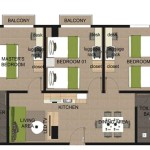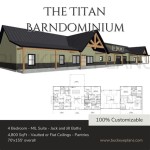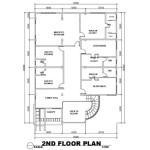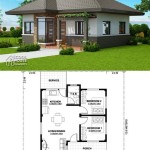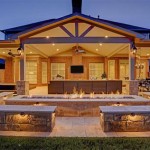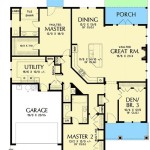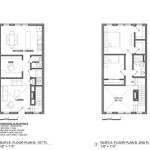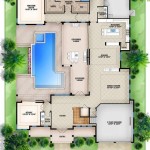Insulated Dog House Plans For 2 Large Dogs
Providing adequate shelter for large dogs, especially when housing two together, requires careful consideration. An insulated dog house provides crucial protection from extreme weather conditions, offering a comfortable and safe haven. This article explores essential aspects of designing and constructing insulated dog house plans specifically tailored for accommodating two large dogs, focusing on size, insulation methods, material selection, and ventilation requirements.
Determining Optimal Size and Dimensions
The size of the dog house is paramount for ensuring both dogs have sufficient space to move comfortably, turn around, and lie down without feeling cramped. Insufficient space can lead to stress and territorial disputes, while an excessively large space may reduce the effectiveness of insulation. To determine the appropriate dimensions, measure the length and height of each dog while standing and lying down. Add a minimum of 25% to these measurements to allow for comfortable movement and shared space.
The internal dimensions of the dog house should accommodate both dogs lying side-by-side or back-to-back, with enough headroom for them to stand without bumping their heads. A general guideline for a dog house designed for two large dogs is an interior floor space of at least 4 feet by 6 feet. The height should be sufficient to allow the tallest dog to stand comfortably, typically around 3 feet. These dimensions are a starting point and may need to be adjusted based on the specific breed and size of the dogs.
The entrance to the dog house also requires careful consideration. It should be large enough for both dogs to enter and exit easily without obstruction. A rectangular opening is generally preferred over a circular one, with a width of at least 2 feet and a height that is approximately 80% of the dogs’ shoulder height. Adding a flap made of heavy-duty vinyl or canvas can help further insulate the entrance and minimize drafts.
Partitioning the interior with a low divider can help create separate spaces for each dog, reducing the likelihood of territorial issues. The divider should be low enough to allow both dogs to see and interact with each other, promoting a sense of shared space while providing individual comfort zones. The divider should not obstruct the entrance and should be securely fastened to the floor and walls of the dog house.
Selecting Effective Insulation Materials and Methods
Insulation is a critical component of a dog house designed for protecting dogs from temperature extremes. Effective insulation helps retain heat during cold weather and keeps the interior cool during hot weather. Several insulation materials are suitable for dog houses, each with its own advantages and disadvantages. Selecting the appropriate material depends on factors such as climate, budget, and ease of installation.
Fiberglass insulation is a common and relatively inexpensive option. It provides good thermal resistance but can be irritating to the skin and respiratory system if not properly installed. When using fiberglass insulation, it is crucial to encapsulate it completely within the walls, floor, and roof to prevent direct contact with the dogs. Ensure that the fiberglass is covered with a vapor barrier to prevent moisture buildup, which can reduce its effectiveness and promote mold growth.
Rigid foam insulation, such as polystyrene or polyurethane, offers excellent thermal performance and is less prone to moisture absorption than fiberglass. It is available in sheets of varying thickness and can be easily cut to fit the dimensions of the dog house. Rigid foam insulation is also less irritating to handle than fiberglass, making it a more user-friendly option for DIY projects. Seal all seams and edges with insulation tape to prevent air leaks.
Reflective bubble wrap insulation is another option for dog houses. It consists of layers of bubble wrap sandwiched between reflective surfaces. This type of insulation works by reflecting radiant heat, helping to keep the dog house cool in hot weather and retain heat in cold weather. Reflective bubble wrap is lightweight, easy to install, and non-toxic, making it a safe and convenient choice for dog houses.
Natural insulation materials, such as straw bales or sheep's wool, can also be used to insulate dog houses. These materials are environmentally friendly and offer good thermal performance. Straw bales are particularly effective for insulating walls and roofs, providing a natural barrier against temperature fluctuations. Sheep's wool is naturally water-repellent and resistant to mold and mildew, making it a durable and sustainable insulation option. When using natural insulation materials, ensure they are properly dried and protected from moisture to prevent decomposition.
The insulation should be applied to all surfaces of the dog house, including the walls, floor, and roof. The thickness of the insulation will depend on the climate. In colder regions, thicker insulation is necessary to provide adequate protection from freezing temperatures. In warmer regions, thinner insulation may be sufficient to keep the dog house cool.
Ensuring Proper Ventilation and Airflow
While insulation is essential for maintaining a comfortable temperature inside the dog house, proper ventilation is equally important for ensuring healthy air quality and preventing moisture buildup. Stagnant air can lead to the accumulation of odors, bacteria, and mold, which can be detrimental to the dogs' health. Ventilation helps to remove stale air and introduce fresh air, creating a more hygienic and comfortable environment.
One common method of providing ventilation is to install vents near the roof of the dog house. These vents allow warm, moist air to escape, preventing condensation and maintaining a dry interior. The vents should be positioned high enough to prevent rainwater from entering but low enough to allow for effective air circulation. A vent on each side of the dog house provides cross-ventilation, maximizing airflow.
The size of the vents will depend on the size of the dog house and the climate. As a general guideline, the total vent area should be at least 1 square inch per cubic foot of interior space. In warmer regions, larger vents may be necessary to provide adequate cooling. The vents should be covered with a screen to prevent insects and other pests from entering the dog house.
Another method of providing ventilation is to leave a small gap between the roof and the walls of the dog house. This gap allows air to circulate freely, preventing moisture buildup and maintaining a more consistent temperature. The gap should be small enough to prevent rainwater from entering but large enough to allow for effective air circulation. The gap should be covered with a screen to prevent insects and other pests from entering the dog house.
The entrance to the dog house also provides ventilation. However, it is important to balance ventilation with insulation. A large, uninsulated entrance can allow drafts to enter the dog house, reducing the effectiveness of the insulation. A flap or door made of heavy-duty vinyl or canvas can help to minimize drafts while still allowing for ventilation.
Regularly inspect the dog house for signs of moisture buildup or poor ventilation. If condensation is present, increase the size or number of vents. Clean the dog house regularly to remove accumulated dirt, debris, and odors. This will help to maintain a healthy and comfortable environment for the dogs.
In summary, designing and constructing an insulated dog house for two large dogs requires careful planning and attention to detail. Proper sizing, effective insulation, and adequate ventilation are all essential for creating a safe, comfortable, and healthy environment for the dogs. By following these guidelines, one can provide their canine companions with the shelter they need to thrive in any weather condition.
Beyond the core aspects of size, insulation, and ventilation, other considerations contribute to the overall design and functionality of the dog house. The choice of building materials, the design of the roof, and the inclusion of features such as a raised floor can enhance the durability, comfort, and aesthetic appeal of the structure.
Selecting durable and weather-resistant materials is crucial for ensuring the longevity of the dog house. Pressure-treated lumber is a popular choice for the frame and walls, as it is resistant to rot and insect damage. Exterior-grade plywood or siding can be used for the exterior cladding, providing additional protection from the elements. The roof should be constructed from a waterproof material such as asphalt shingles, metal roofing, or rubber roofing. All materials should be non-toxic and safe for dogs to chew on or come into contact with.
The design of the roof is also an important consideration. A sloping roof is generally preferred over a flat roof, as it allows rainwater and snow to run off easily, preventing water damage and reducing the risk of leaks. The slope of the roof should be steep enough to ensure adequate drainage but not so steep that it is difficult to construct. An overhang on the roof can provide additional protection from the sun and rain, shielding the entrance of the dog house from the elements.
Incorporating a raised floor into the design of the dog house can help to keep the interior dry and warm. A raised floor elevates the dog house above the ground, preventing moisture from seeping into the floor and reducing the risk of drafts. The floor should be constructed from durable, waterproof materials such as pressure-treated lumber or exterior-grade plywood. A layer of insulation beneath the floor can further enhance the thermal performance of the dog house.
Regular maintenance is essential for keeping the dog house in good condition. Inspect the dog house regularly for signs of damage, such as cracks, leaks, or insect infestations. Repair any damage promptly to prevent it from worsening. Clean the dog house regularly to remove accumulated dirt, debris, and odors. Replace the bedding as needed to ensure a clean and comfortable sleeping area for the dogs.
The appearance of the dog house can also be customized to match the style of the home and garden. Paint or stain the exterior of the dog house to protect it from the elements and enhance its aesthetic appeal. Add decorative features such as trim, shutters, or a window box to create a more visually appealing structure. Consider incorporating the dog house into the overall landscape design, creating a comfortable and inviting space for the dogs to relax and enjoy the outdoors.

Large Dog House Outdoor For 2 Medium Dogs Petsfit

How To Build An Insulated Dog House With Opening Roof

New Dog House Plans For 2 Large Dogs Home Design

How To Build A Diy Insulated Dog House Wilker Do S

Cold Weather Dog House Plans

Diy Insulated Dog Kennel Clearance

How To Build A Diy Insulated Dog House Wilker Do S

Double Dog House Plans Myoutdoorplans

13 Diy Doghouse Plans And Ideas The House Of Wood

Building A Doghouse Buildeazy
Related Posts

